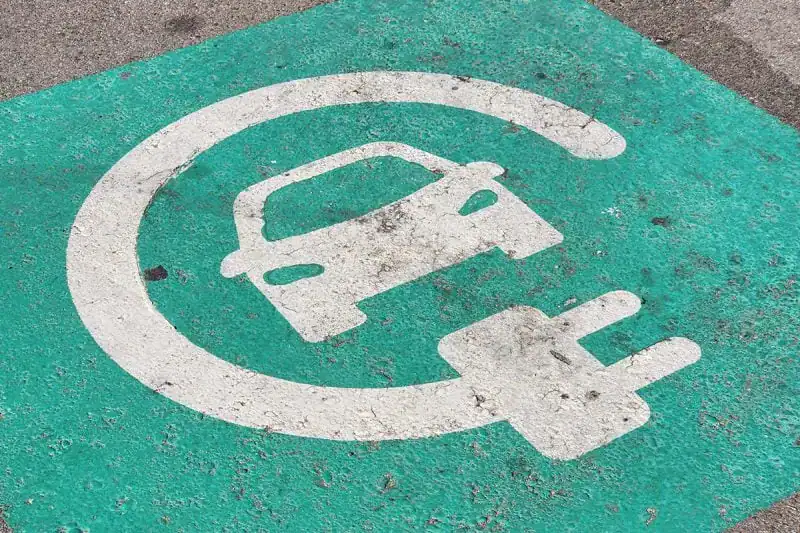Electric Vehicles Gaining Ground in South Africa
South Africa has more EV chargers than petrol stations, a fact that surprises many motorists across the country. While public electric vehicle (EV) charging infrastructure is still developing, the actual number of places where EVs can be charged — including homes and buildings — far exceeds the number of traditional fuel stations.
This shift reflects a slow but growing embrace of electric vehicles in the country, where charging possibilities stretch far beyond designated EV stations. Many South Africans are unaware that an electric car can be charged using a standard home socket, presenting a major convenience for EV owners.
Charging Infrastructure Is Broader Than It Appears
The most common concern among potential EV buyers in South Africa is the perceived lack of charging infrastructure. However, that worry often stems from outdated assumptions about how charging works. Traditional petrol and diesel vehicles depend entirely on refuelling stations. EVs, on the other hand, offer a wide variety of home charging and portable EV charger solutions.
Every building connected to the electrical grid has the potential to be an EV charging point. This means offices, residential homes, and even rural lodges can offer some level of charging. By this measure, the charging infrastructure in South Africa is already more extensive than many people believe.
Understanding EV Charging Types and Speeds
To make sense of the charging landscape, it’s important to understand the two main types of EV charging:
1. Direct Current (DC) Charging
DC charging is found almost exclusively at public EV stations because it requires high output and specialized equipment. In South Africa, some DC chargers deliver power at speeds of up to 400kW, though most function between 40kW and 100kW. This type of fast-charging is ideal for long-distance travel and quick top-ups.
2. Alternating Current (AC) Charging
AC charging is more common and can be divided into two categories:
-
Fast AC Charging: 7.4kW, 11kW, or 22kW speeds. These typically require wall-mounted chargers that can draw higher currents.
-
Slow AC Charging: This type includes charging via a regular home socket — the most underestimated option.
South Africa’s electricity system operates on a 230V supply. A portable EV charger plugged into a regular wall socket can deliver up to 3.7kW, depending on the amperage supported by the socket. Common socket types, such as the SANS 164 or SANS 164-2, can handle currents of up to 16A.
Portable EV Chargers Expand Home Charging Options
Most EV manufacturers ship their vehicles with portable EV chargers that are compatible with regular three-prong wall outlets. This has made it possible for many South Africans to avoid installing a costly wall-mounted charger altogether.
For example:
-
A 10A charger provides 2.3kW of power.
-
A 15A charger provides 3.5kW.
-
A 16A charger can reach 3.7kW.
Charging an entry-level EV with a 40kWh battery at 3.7kW would take about 10 hours from 0% to 100%. However, this doesn’t mean drivers need to wait that long regularly. Since the average South African motorist drives under 50km a day — which only uses around 10kWh — a top-up of just a few hours overnight is often enough.
More Chargers, More Convenience
This growing network of home charging options significantly boosts the practicality of EV ownership. It also challenges traditional fuel-based mindsets. Instead of lining up at a filling station, EV owners can refuel in their garages or driveways while they sleep.
Even though public DC chargers are vital for long-distance trips, the portable EV charger is what empowers everyday use — making charging more accessible, affordable, and flexible.
Safety First: Quality Sockets and Proper Cables
As with any electrical appliance, using high-quality equipment is crucial. While portable chargers are designed for ease of use, they can draw high currents over extended periods. To avoid overheating:
-
Avoid using extension leads unless they’re rated for 16A continuous use.
-
Check that wall sockets are in good condition.
-
Ensure chargers have adjustable current settings for safer charging in different environments.
Travellers especially should be cautious, as some sockets in guesthouses or lodges may be limited to 10A. Being able to adjust the charger output manually or through the EV’s settings is essential to ensure compatibility and safety.
The Future of EV Adoption in South Africa
The real challenge to widespread EV adoption in South Africa is not the number of chargers, but public awareness. Many consumers are still conditioned to think like petrol drivers — focusing on filling stations as the only way to power a vehicle.
But as more South Africans learn that EVs can be charged at home or even on the road with the right socket, the demand for electric vehicles may increase. Local and international automakers are already working to introduce affordable EV models, further supported by improving electricity availability and renewable energy growth.
The country may also soon see regulations supporting mandatory EV readiness in new developments, such as providing EV-compatible plugs in garages or parking lots.
Conclusion
South Africa has more EV chargers than petrol stations, and that includes homes, offices, and travel accommodations equipped with ordinary sockets. As the country’s understanding of electric vehicles, charging infrastructure, and portable EV chargers improves, EV adoption is likely to accelerate.
With home charging solutions proving more practical than many believed, and the potential of public DC stations growing, the electric future of South African mobility is already here — just not where most people expected it to begin.
Here are five mainstream South African media sources with relevant articles or sections that support the topic “South Africa has more EV chargers than petrol stations”, EV adoption, or charging infrastructure:
1. MyBroadband
Article: South Africa has more EV chargers than petrol stations
Link: https://mybroadband.co.za/news/motoring/519162-south-africa-has-more-ev-chargers-than-petrol-stations.html
Relevance: Main source of the article’s topic; outlines the surprising scale of EV charging in SA compared to fuel stations.
2. BusinessTech
Article: South Africa’s electric car infrastructure is growing – here’s what’s coming
Link: https://businesstech.co.za/news/motoring/687305/south-africas-electric-car-infrastructure-is-growing-heres-whats-coming/
Relevance: Discusses growth in EV infrastructure, including home charging and future expansion.
3. News24 – Wheels
Article: Where and how to charge your EV in South Africa
Link: https://www.news24.com/life/motoring/car-tech/where-and-how-to-charge-your-ev-in-south-africa-20230316
Relevance: Explains charging options, from public chargers to home sockets, including portable solutions.
4. TopAuto
Article: How long it takes to charge an electric car in South Africa
Link: https://topauto.co.za/news/65834/how-long-it-takes-to-charge-an-electric-car-in-south-africa/
Relevance: Provides data and context on home vs public EV charging times, portable charger performance.
5. Engineering News
Article: Electric vehicles charging ahead – but still facing hurdles
Link: https://www.engineeringnews.co.za/article/electric-vehicles-charging-ahead-but-still-facing-hurdles-2023-11-02
Relevance: Analyzes EV market readiness and infrastructure progress in South Africa, including home adoption trends.




